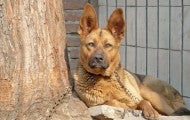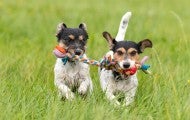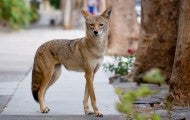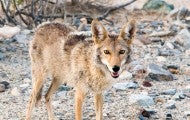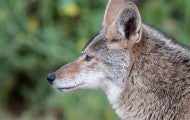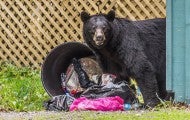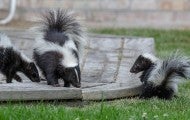Across the country, entire communities ban or restrict dogs because of their breed or perceived breed. The HSUS opposes such public policies as inhumane and ineffective. There is no evidence that breed-specific laws reduce dog bites or attacks on people and they divert resources from more effective...
In the heat of summer, it’s tempting to take your dog swimming in lakes or rivers to help them cool down. But before you let your pup dive in, be aware that not all water is safe for dogs. That’s because toxic blue-green algae—also called cyanobacteria—is present in some bodies of water and can be...
Foxes are omnivores, hunting very small animals and scavenging in cities and towns where freely available pet food and garbage can make life easier. It’s not unusual for a fox to be seen out and about during the day. Learn More About Foxes Foxes are afraid of people and will usually run away when...
Coyotes go out of their way to stay out of ours: They’re partial to open areas but seek hiding places in cities. They’re naturally active in daylight but adopt nocturnal lifestyles when living near humans. They can follow traffic signals and cross roads after rush hour. They even try to “escort” dog...
Once robust, populations of cougars (also known as mountain lions or pumas) have declined drastically across most of their range in the Americas. The population decline is due to the impact of extensive hunting and predator control, in addition to continued habitat loss and fragmentation. Cougars...
Somewhere toward the end of the last ice age, we formed an alliance with wolves: Maybe the ancestors of dogs got food scraps while our own ancestors gained protection from predators and other humans. These social species eventually collaborated on a vast scale, possibly even hunting woolly mammoths...
If you spot a coyote in your neighborhood, relax: Most coyotes avoid people. “Seeing a coyote out during the day is not a cause for alarm, especially in the spring and summer when they’re out looking for food for their pups,” says Lynsey White, HSUS director of humane wildlife conflict resolution...
MEEKER, Colo.—A wildlife expert who examined photos of dead cows obtained by the Humane Society of the United States in an open records request has concluded that wolves are not to blame for the deaths of 41 cattle whose bodies were found near Meeker, Colorado in 2022. The examination of the photos...
It started in 2002: The bears around Durango, Colorado, came down from the hills to feast on the city’s garbage. Normally, natural food—nuts and berries and acorns—keeps them in the woods, but a series of droughts and late freezes in 2002, 2007, 2012 and 2017 left them hungry. Despite their fear of...
It was a rude awakening: Just as my thoughts drifted into a pre-sleep jumble, a skunk pounced onto my nighttime reading. Not just any skunk, but a giant one flashing her black-and-white tail in a series of pungent leaps. Back and forth she went, bed to floor to bed, before my eyes caught up with my...
It’s March 2021, and then-White House press secretary Jen Psaki is holding a press conference. Newly elected President Joe Biden has been in office for less than two months, and the hard-charging White House press corps, always on the lookout for broken political promises, wants answers about the...
